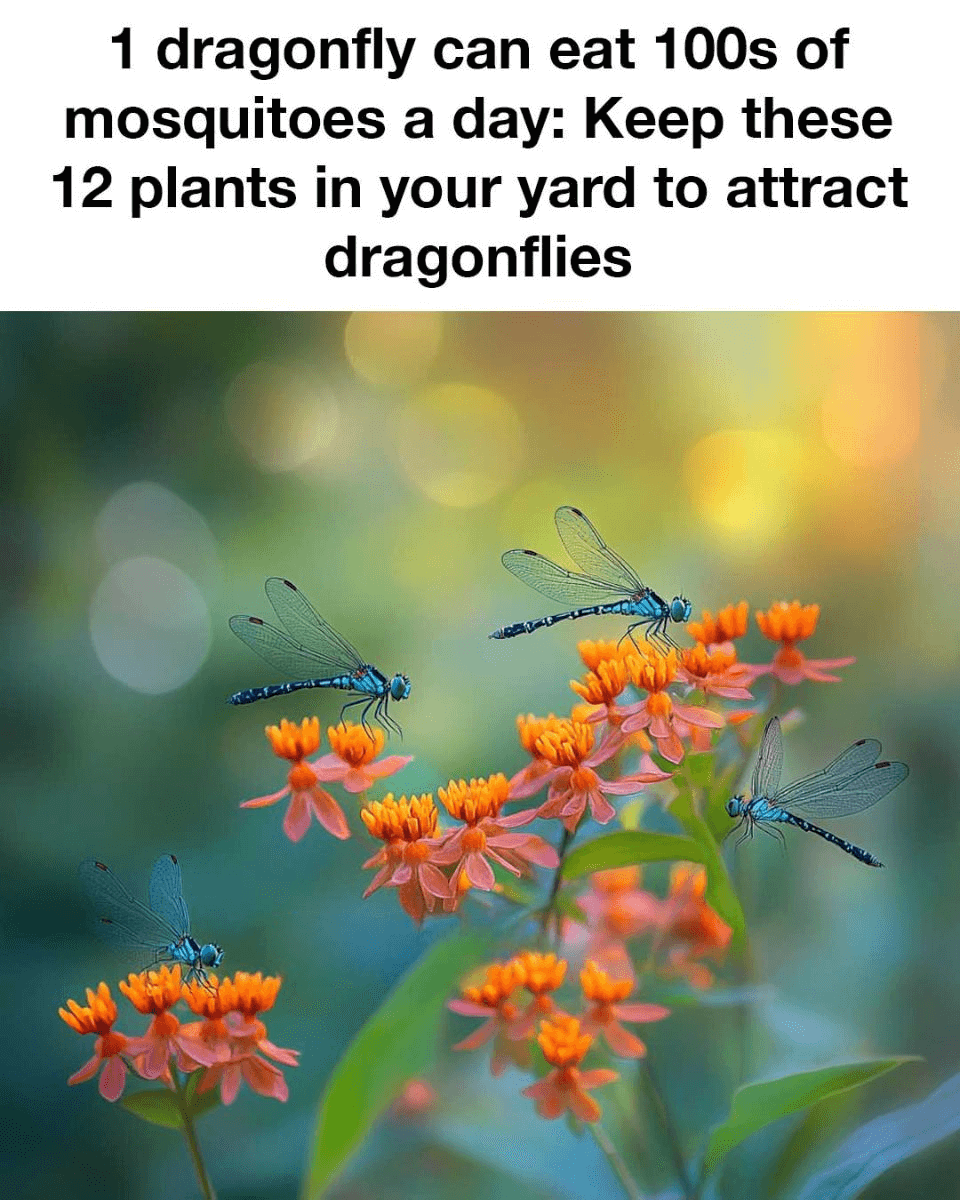Dragonflies aren’t just mesmerizing to watch—they’re also powerful allies in natural pest control. Known for their insatiable appetite, a single dragonfly can consume several hundred mosquitoes in one day, helping to control mosquito populations and reduce the spread of mosquito-borne diseases. Inviting dragonflies into your garden not only supports a more balanced ecosystem but also enhances biodiversity, making your outdoor space healthier and more vibrant.
Dragonflies: Nature’s Built-In Mosquito Control
Dragonflies are members of the insect order Odonata and are easily identified by their long bodies, large compound eyes, and two pairs of strong, transparent wings. Agile in the air, they’re frequently spotted flitting around ponds, streams, and lush gardens. These carnivorous insects specialize in eating smaller bugs, with mosquitoes being among their favorites. Their ability to capture prey mid-flight with precision makes them exceptional hunters. By understanding how dragonflies live and what they need, you can encourage them to settle in your yard.
Why Dragonflies Are Effective at Managing Mosquitoes
Dragonflies contribute to mosquito control at every stage of their development. The aquatic nymphs (larval stage) feed on mosquito larvae in the water, while adult dragonflies prey on flying mosquitoes. This two-tiered feeding behavior significantly limits mosquito reproduction. Providing the right conditions to support the entire life cycle of dragonflies will help maintain their presence and amplify their impact as natural mosquito predators.
Building a Garden That Attracts Dragonflies
If you want to bring more dragonflies into your garden, it’s essential to recreate elements of their natural habitat. They require water to breed, so consider adding a small pond or water feature with shallow edges and aquatic vegetation where nymphs can develop. Select a variety of flowering plants that serve as both perches and hunting grounds for adult dragonflies. Avoid using pesticides, as they can be harmful to dragonflies and other beneficial insects. A diverse, chemical-free garden will help attract and sustain dragonfly populations.
12 Plants That Help Bring Dragonflies to Your Garden
Choosing the right plants can significantly improve your chances of attracting dragonflies. These plants not only provide shelter and perching spots but also help support the insects that dragonflies feed on. For best results, include a mix that blooms throughout the growing season.
1. Butterfly Weed (Asclepias tuberosa)
Bright orange blossoms and sturdy stems make butterfly weed ideal for attracting dragonflies. This low-maintenance perennial thrives in full sun and well-drained soil, offering nectar and a reliable landing place.
2. Joe-Pye Weed (Eutrochium purpureum)
Standing tall with clusters of pinkish-purple flowers, Joe-Pye weed does well in moist, sunny spots. Its height and dense blooms provide both nectar and perches, drawing dragonflies, especially in late summer.
3. Black-Eyed Susan (Rudbeckia hirta)
Known for its golden-yellow petals and dark centers, Black-eyed Susan blooms for months, offering a long-lasting nectar source and resting area for dragonflies. It’s hardy and easy to grow in full sun.
4. Swamp Milkweed (Asclepias incarnata)
Loving wet conditions, swamp milkweed produces fragrant pink or white flowers that appeal to dragonflies and other pollinators. It’s also a magnet for monarchs, adding more ecological value to your space.
5. Yarrow (Achillea millefolium)
This drought-tolerant perennial features flat clusters of tiny flowers that serve as perching platforms. Blooming from spring through fall, yarrow offers continuous nectar for dragonflies and other beneficial insects.
6. Meadow Sage (Salvia pratensis)
Meadow sage adds color and fragrance to your garden with its spiky flowers in shades of blue, pink, or purple. It attracts dragonflies with its nectar and offers vertical surfaces for perching. Plant it in full sun and well-drained soil.
7. Coneflower (Echinacea spp.)
Coneflowers are tough and beautiful, with large blooms and strong stems that hold up well in summer sun. They provide nectar and resting spots from midsummer into fall, making them great for dragonflies.
8. Goldenrod (Solidago spp.)
This late-season bloomer offers a vital nectar source when many other plants have faded. Its tall yellow flower clusters are a hit with pollinators and make excellent late-year dragonfly perches.
9. Lavender (Lavandula spp.)
Lavender is beloved for its scent and violet flowers, which appear in early summer. It deters pests while attracting dragonflies, and its compact shape makes it easy to fit into most garden layouts.
10. Bee Balm (Monarda spp.)
With vibrant blooms in reds, pinks, and purples, bee balm draws hummingbirds and dragonflies alike. It flourishes in moist, sunny areas and produces nectar well into early fall.
11. Liatris (Liatris spicata)
Also known as blazing star, liatris stands tall with spires of purple or white flowers. Its striking form and summer-to-fall blooming period make it a favorite perch and food source for dragonflies.
12. Asters (Aster spp.)
Blooming in fall, asters ensure dragonflies have food late in the season. Their purple, pink, and white daisy-like flowers also provide cover and texture, enhancing both the look and function of your garden.
Planning Your Garden: Tips for Balance and Diversity
To create a garden that truly supports dragonflies, use a thoughtful mix of plants that bloom at various times throughout the year. Plant in clusters for greater visual impact and pollinator attraction, and mix heights and textures to suit different species’ needs. Match plant choices with your climate and soil conditions to ensure healthy growth. A well-planned, diverse garden will offer dragonflies everything they need—from breeding sites to food sources—throughout the seasons.
Final Thoughts: A Healthier Yard Without Mosquitoes
By planting dragonfly-friendly flowers and incorporating water features, you can enjoy a natural, low-maintenance method of mosquito control. Dragonflies not only help reduce pests but also add beauty and movement to your garden. A thoughtfully cultivated landscape can become a haven for these beneficial insects, giving you a more enjoyable, biodiverse, and mosquito-free outdoor experience. Let dragonflies be your garden’s natural guardians—and enjoy the benefits they bring.
